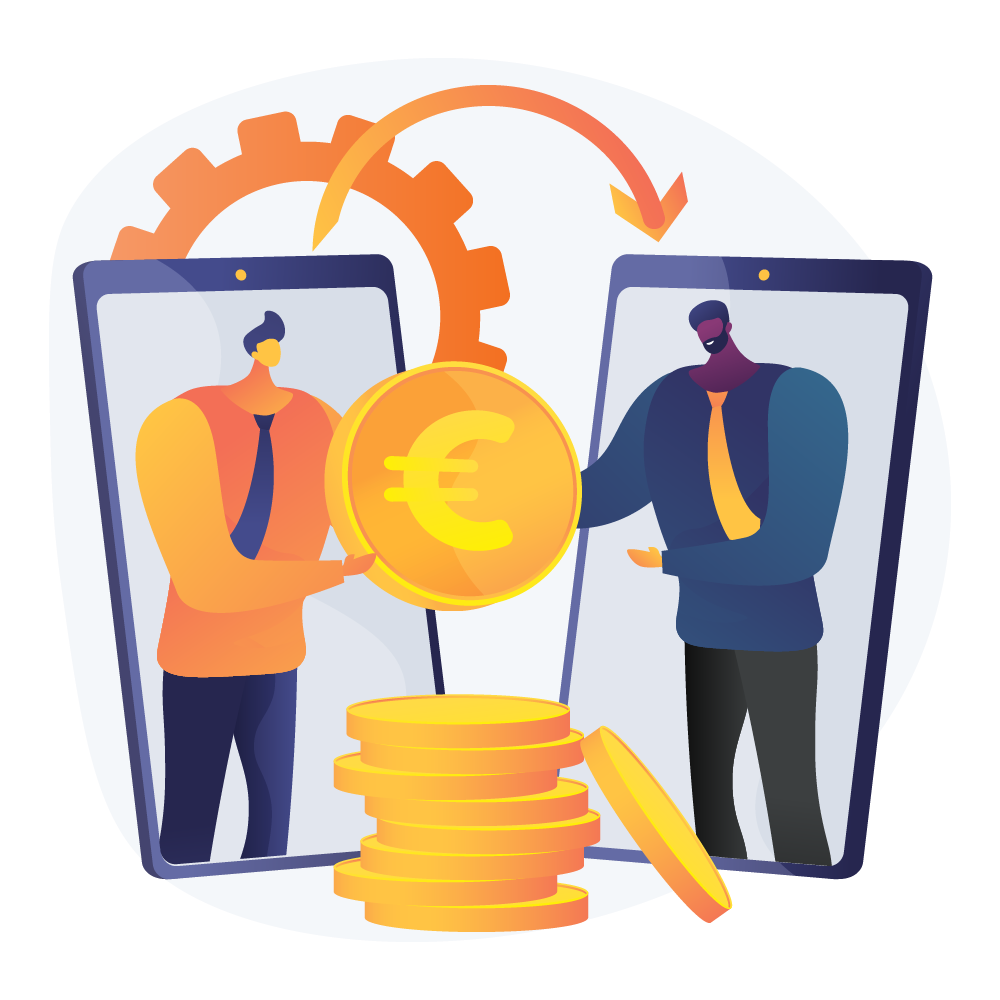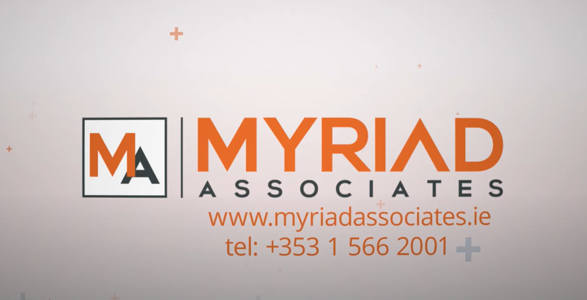The EIC Accelerator supports start-ups, spinout companies and individual Small and Medium Enterprises (SMEs) in developing and scaling game-changing innovations. Sometimes, it will also help small mid-caps of up to 500 employees.

The EIC Accelerator grant, part of the European Innovation Council’s (EIC) funding framework under Horizon Europe, is a significant funding mechanism for startups and SMEs that focuses on driving deep-tech innovation and breakthrough solutions.
The EIC Accelerator targets early-stage SMEs, including startups and spinouts who need funding for innovation activities (Technology Readiness Level, or TRL 6-8). Companies can apply for a grant component of up to €2.5 million and an investment component of between €500,000 and €10 million.
Its support for high-risk, high-impact innovation makes it one of the few funding tools for early-stage innovators, where projects may still be too risky for private investment.


Companies can apply for “grant only” (of up to €2.5 million) or “blended finance”, which includes an equity investment of up to €10 million. The funding supports up to 24 months of activity.
The EIC Accelerator funds up to 70% of the project’s budget; the beneficiary must finance the other 30%.
Additionally, companies selected for EIC funding can take advantage of various benefits as part of the EIC community. Successful applicants will get access to coaching, mentoring and Business Acceleration Services.
The EIC Accelerator targets early-stage SMEs, including startups and spinouts who need funding for innovation activities (Technology Readiness Level, or TRL, 6-8). Unlike some other EIC supports, companies cannot apply as part of a consortium.
Any organisations that are based within an EU member state can apply for EIC Accelerator support. Your company will also be particularly welcomed if it is an SME or start-up that has a female CEO.
Companies must show that their projects are at TRL 6-8 and need the funding to get to a commercialisation point for blended finance. TRL 6 means that proof of concept has been validated in a relevant environment; university spinouts are common applicants for this reason.

The application consists of three steps which must be accepted in succession: a short proposal, a long proposal and a face-to-face interview with the EIC jury.
You should demonstrate that the problem is genuine and widespread, the proposed solution is unique, the market is sizable, and the business model is sound. At all stages, the evaluators are assessing your proposal on excellence, impact and implementation.
The Step 1 Short Proposal is the first stage of the application process, where applicants provide an overview of their innovation, its potential, and their company. It enables both the EIC and the applicant to assess early if the project is likely to qualify. Companies can apply to Step 1 on a rolling basis.
Companies should answer questions about their team, potential market, and scientific breakthrough innovation, as well as provide a 10-slide pitch deck and a 3-minute video.
Four evaluators will provide a response within four weeks of submission; if at least three give a GO, applicants may proceed to Step 2.
If your short proposal receives a GO, you can submit your full proposal to any of the deadlines within twelve months. Deadlines come twice a year for Step
The Step 2 proposal is longer than Step 1, with 50 pages to fill in compared to the 12 of Step To move on to Step 3, you will need three GOs from all three evaluators.
If you receive three unanimous GOs, you will be invited to an interview with a jury panel of 4-6 industry experts, either in-person in Brussels or remotely via video conference.
The interview lasts 45 minutes, including a 10-minute pitch and a 35-minute Q&A session.
"Marc and his team assisted Hooke Bio in securing EIC Accelerator funding (blended finance). I doubt we would have successfully navigated the complicated EIC process and portal without Marc's in-depth knowledge of the portal's structure and strategic grant writing. He has fantastic attention to detail, is easily contactable and always very clear with his feedback. Marc's assistance does not end with notification of the funding; he continues to advise, assist and put us in contact with others in his vast network who have received similar funding."





Dr Finola Cliffe
Hooke Bio Ltd
"Marc and his team have been an excellent support to Luminate, advising on DTIF and EIC Accelerator grant submissions. They have an obvious understanding of the funding requirements and have supported us through all phases, from grant writing to interview preparation. I would highly recommend him for support on deeptech funding applications."





Aaron Hannon
Luminate Medical
“Marc and the Myriad team helped us apply for and secure an EIC Accelerator Grant. I would recommend Marc and the wider team to anyone applying for this or any other type of funding. He has an incredible talent for structuring and writing technical content such that it is both easy to understand and compelling and a knowledge of the process that is second to none. Consultants often have a sometimes-earned reputation for "give me your watch, and I'll tell you the time". Marc could not be more different to this. His optimism, proactivity, resilience and sense of humour kept us going through a challenging process from beginning to end. I lost count of the number of times he has said, "Don't worry, I'll do that". He's also a great bloke, and I look forward to having the opportunity to work with him again in future.”





Dominic Griffiths
Alesi Surgical
"Marc is the best in the grant funding business, with a stellar success rate at innovation funding mechanisms. He acts as a guide to enable the reviewer to be the hero - clarifying your message so the audience will listen - and his approach works. I've heard Marc described as a great grant writer and editor, but that description is an injustice to his deep expertise, effort, and skill. We've had a 100% success rate for all applications we've worked with Marc - notably EIC Accelerator grant-first (plus future equity) success in 2021."





Stephen Cox
Invera Medical
“Kite Medical had the pleasure of working with Marc on a recent grant application to the EIC Accelerator, which was successful. Marc became part of our team during this time and was a consistent calming influence. He is so knowledgeable about this process and works so efficiently that it significantly enhanced our experience. We would be more than happy to recommend Marc and his team at Myriad.”





Joan FitzPatrick
Kite Medical
"Lauren and the Myriad team helped us apply for and secure funding through the Disruptive Technologies Innovation Fund (DTIF). Lauren was instrumental in our success, providing CergenX and the other consortium members with clear guidance, advice, and writing expertise. I look forward to continuing this working relationship, and I would recommend Lauren and the wider team to anyone applying for this or any other funding of this type."





Jason Mowles
CergenX
"The Galenband team collaborated with Lauren through Myriad to prepare our grant submission. Throughout this process, Lauren demonstrated a wealth of knowledge, offering insights and clarity on the nuanced details of a grant application. This significantly expedited and streamlined the proposal and interview preparations. We look forward to continuing our collaboration with Lauren during the grant agreement process and sincerely appreciate the support received thus far."





Oisín McGrath
Galenband
"We worked with Lauren and Marc at Myriad for over a year in preparing our submission for the EIC Accelerator, and they were a pleasure to work with during that time. They helped us with every step from proposal writing to interview preparation and were key to our success in securing the approval for a Grant-First Award of €2.5m followed by €6m in equity. We continue to work with Lauren and Marc since their experience is invaluable in the ongoing management of our grant, and it frees me up as CEO to focus on driving the business, knowing that I am in their safe, guiding hands. I couldn't recommend Lauren, Marc and Myriad highly enough!"





Peter F Doyle
BioSimulytics
"We worked with Lauren and Marc at Myriad for over a year in preparing our submission for the EIC Accelerator, and they were a pleasure to work with during that time. They helped us with every step from proposal writing to interview preparation and were key to our success in securing the approval for a Grant-First Award of €2.5m followed by €6m in equity. We continue to work with Lauren and Marc since their experience is invaluable in the ongoing management of our grant, and it frees me up as CEO to focus on driving the business, knowing that I am in their safe, guiding hands. I couldn't recommend Lauren, Marc and Myriad highly enough!"





Mark Brassil
Smart Reactors Ireland and Cerefuze Medical Devices UK Ltd
"Working with Myriad on our EIC grant submission was more than a pleasure. They have much experience in grant writing. We were successful with their expert guidance and support. Thanks for all your help, Myriad! You did a great Job!"





Shahar Shaked
BioProtect Ltd
“As a result of working with Myriad, we have secured grant funding on three separate occasions, and we're currently waiting for the results of another grant application we've made. We certainly think that with Myriad’s help, we've been able to produce a very strong application.”





Chris Stanford
Arden Biotech
”Once we met with Marc, it became apparent he understands precisely what the EU is looking for. Even though it was our grant, our proposal, and it was for our company, we could feel he was invested in it. He just had little ideas that really helped to make sure we got all the marks that were going."





Dr Kate Reddington
BioProbe Diagnostics
"Marc and the Myriad team are such pros; his work ethic and attention to detail, coupled with his strategy guidance, are so compelling, and his results speak for themselves; it can't be all down to luck.”





Tony Killarney
ONK Therapeutics
Myriad has an enviable track record with R&D grant applications. Using our grant application services can give you a significant competitive advantage over other grant applicants.
Our grant bid writers have secured over €300m for our clients in the last three years. We are also very proud to have secured some of the highest-scoring applications in Europe, with five of our projects scoring 15/15.
About Myriad

As a European funding mechanism, the EIC Accelerator is open to applications from EU member states and countries associated with the programme (such as Norway, Iceland and the UK).
Applicants can be a single company, from startups to small mid-caps (up to 499 employees). Small mid-caps can only apply for investment. Natural persons or other legal entities can apply with the intention to set up an SME. The EIC Accelerator particularly welcomes applications from eligible companies with female CEOs.
Companies must demonstrate that their projects are at TRL 6-8 and need the funding to get to a commercialisation point for blended finance. TRL 6 means that proof of concept has been validated in a relevant environment; university spinouts are common applicants for this reason. Applicants should have a functioning prototype or a validated proof of concept, as well as clear commercial potential, but still require funding to capitalise on this market application.
Companies at TRL 9 or already at commercialisation can apply for grant-only or equity-only funding to enable scaling.
Applicants may submit only one application to the EIC Accelerator at a time. If a legal entity submits the same or an improved proposal to the EIC Accelerator (either Challenges or Open call) and it is rejected three times at any stage—short proposal, full proposal, or interview—it will no longer be eligible to apply to the EIC Accelerator under the Horizon Europe Framework Programme, which runs through the end of 2027.
Grant funding: Up to €2.5 million (non-dilutive) for technology development (TRL 5–8).
Equity investment: Up to €15 million (dilutive) from the EIC Fund to scale up innovations (TRL 9+).
Blended finance: Combination of grant and equity.
The EIC Accelerator prioritises innovations that address critical societal challenges, including:
Each year, the EIC will release specific challenges and welcomes applications that address them. For 2025, the EIC is seeking solutions for the following challenges:
These challenges have a €50 million budget each.
For projects out of scope of the above, applicants are invited to apply to the EIC Accelerator Open, designed for proposals in any field of science or technology.
Projects should be at TRL 5 or higher (technology validated in relevant environment).
The Accelerator helps develop up to TRL 9 (market-ready product).
The Step 1 Short Proposal is the first stage of the application process, where applicants provide an overview of their innovation, its potential, and their company. It enables both the EIC and the applicant to assess at an early stage if the project is likely to qualify.
Companies should answer questions about their team, potential market, and scientific breakthrough innovation, as well as provide a 10-slide pitch deck and a 3-minute video.
The Short Proposal is submitted through the EIC’s Funding and Tenders platform by filling in standard questions and then a 12-page narrative. Four evaluators will provide a response within four weeks of submission; if at least three give a GO, applicants may proceed to Step 2.
There is no deadline for the Step 1 Proposal; companies can apply to Step 1 on a rolling basis. However, there is a deadline for Step 2, so aligning your Step 1 Proposal with the Step 2 cut-off you’re aiming for is the smart move. Step 1s accepted in 2025 can proceed in any of the calls in 2025 or 2026. Step 1s accepted in 2023 or 2024 can submit their full proposal to the 2025 calls. You can decide which cut-off to apply to. We recommend submitting your Step 1 with a minimum of 12 weeks before the cut-off you’re aiming for, to allow for the review of Step 1 and time for the preparation of Step 2.
You will receive feedback on the strengths and weaknesses of your application, which can inform your Step 2 proposal.
Step 1 should make it clear that the problem is genuine and widespread, the proposed solution is unique, the market is sizable, and the business model is sound.
If your short proposal receives a GO, you can submit your full proposal to any of the deadlines within twelve months.
As with Step 1, Step 2 is submitted online using the Funding and Tenders portal. The Step 2 proposal is longer than Step 1, with 50 pages to fill in compared to the 12 of Step 1. A pitch deck (which will be used in Step 3, if approved) and a 3-minute video are also required.
Three new evaluators will review the application within 9 weeks. To move on to Step 3, you will need three GOs from the evaluators.
Deadlines come twice a year for Step 2. For 2025, the deadlines for submissions are March 12, 2025, and October 1, 2025.
Step 2 is judged on the same criteria, but your responses need to be much more in-depth. It’s important not to underestimate the Step 2 Proposal; we invite you to review the template application form, especially the Technical Description (Part B), to understand the level of detail required.
Following review at Step 3, if you receive three unanimous GOs, you will be invited to an interview with a jury panel of 4-6 industry experts, either in-person in Brussels or remotely via video conference.
The interview lasts 45 minutes, including a 10-minute pitch using the pitch deck from Step 2 and a 35-minute Q&A session. Three representatives should be at the interview; employed staff, board members and investors of the applicant company may participate in the interview.
The GO/NO GO decision is voted on by the jury and is a consensus. If successful, you’ll be invited to negotiate a grant agreement. If unsuccessful, you’ll usually receive a Seal of Excellence, demonstrating that the proposal was considered strong enough to reach the jury stage. The Seal of Excellence facilitates funding from other funding sources and access to EIC Business Acceleration Services.
At all stages, the evaluators are assessing your proposal on excellence, impact and implementation:
Step 1 is continuously open to proposals.
There are multiple cut-off dates for Step 2 throughout the year, for those have received a GO from Step 1. These vary annually, so it's important to check the EIC website or the Funding & Tenders Portal.
Yes, but only after receiving feedback. Resubmissions may require addressing the evaluators’ comments or waiting for a certain period, depending on the stage of rejection.
Applicants may submit only one application to the EIC Accelerator at a time. If a legal entity submits the same or an improved proposal to the EIC Accelerator (either Challenges or Open call) and it is rejected three times at any stage—short proposal, full proposal, or interview—it will no longer be eligible to apply to the EIC Accelerator under the Horizon Europe Framework Programme, which runs through the end of 2027.
It varies, but historically the EIC Accelerator has had a low success rate (5–8%), due to the high number of applicants and competitive selection process.
EIC Coaches and Programme Managers can provide business acceleration services.
National Contact Points (NCPs) offer guidance at country level; for Ireland, this is Enterprise Ireland.
Some applicants hire professional grant writers or consultants; Myriad has one of the highest success rates in Europe with the EIC Accelerator.